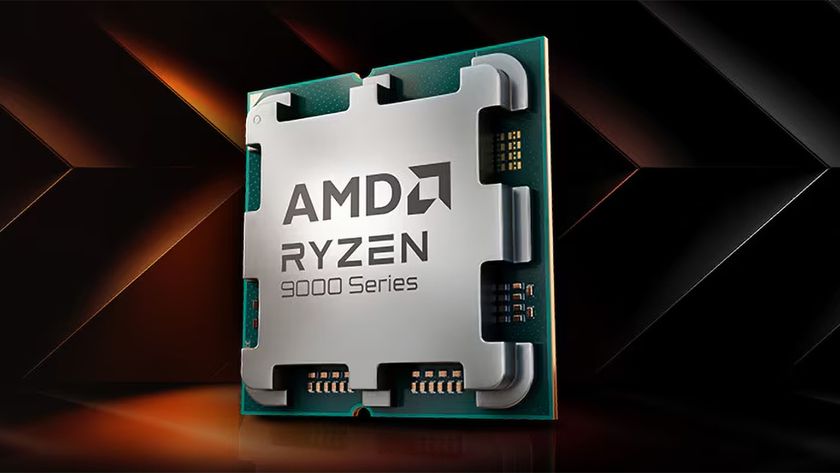Intel Is Reducing Server Chip Pricing in Attempt to Stem the AMD Tide: Report
Intel's leveraging its verticality to put price pressure on the server market.
Update 9/14/21 10:20am PT: Clarified details of market share and discounts.
Original Article:
According to DigiTimes, Intel has pivoted on its server strategy to fight a supply-constrained AMD, and is now offering more competitive pricing on its server processors. However, it's noteworthy that Intel hasn't changed its official recommended pricing, so these deals are likely coming as part of volume purchases with its largest customers.
While some reports point toward a relative normalization of AMD's CPU supply, AMD has two distinct disadvantages compared to Intel: It has fewer revenue sources than its much bigger CPU rival, and it doesn't own the factories that produce its market-turning Zen chips.
Intel, on the other hand, can leverage its vertical integration (meaning that development and manufacturing take place in an almost entirely Intel-owned and managed supply chain), as well as its massive revenue advantage, to adjust final pricing. In other words, Intel pulls a lot more levers to increase demand and (Intel hopes) attract would-be AMD clients back into the Intel fold.
AMD has been making steady strides in server market penetration, indicating that demand is strong for its chips. However, unserved demand means that companies looking to invest in their server infrastructure or who aim to deploy AMD chips in any major way sometimes can't wait for the chips to become available. And Intel is reportedly making it more attractive for those companies to go back to the Intel fold or to skip AMD in the first place.
This is especially important in the server and HPC markets, where system choices today have a considerable impact on future choices. Changing up your whole server infrastructure from Intel to AMD or vice-versa usually brings more headaches (and a much greater investment) than simply upgrading through the same manufacturers' product stack.
Stay On the Cutting Edge: Get the Tom's Hardware Newsletter
Get Tom's Hardware's best news and in-depth reviews, straight to your inbox.

Francisco Pires is a freelance news writer for Tom's Hardware with a soft side for quantum computing.
-
JayNor "there seems to be no particular technological reason why Intel regained market share..."Reply
Intel shipped Ice Lake Server chips during the quarter, along with a new generation of Optane memory. Ice Lake server added several new features for avx512.
AMD's cores still only include avx2 and have not yet implemented the equivalent of Intel's int8 dlboost or the bfloat16 processing available in Cooper Lake server chips. -
spongiemaster Reply
Indeed. It's not really a technological advantage, but a manufacturing advantage. Intel still has all their 14nm capacity, now you add Ice Lake on 10nm, and Intel likely saw a pretty significant increase in chip capacity in the server space which AMD can't match. Big increase in capacity in a supply constrained market equals increased market share.JayNor said:"there seems to be no particular technological reason why Intel regained market share..."
Intel shipped Ice Lake Server chips during the quarter, along with a new generation of Optane memory. -
Jimbojan Intel is about to put out its new server, it is better to clear the deck now before Jan. 2022Reply -
Liquidrider I am sure Intel would like to spin it that way, but the truth is they don't have a choice. The power consumption behind their chips is ridiculous. And in order to offset those costs for clients, they have to lower the prices or risk losing more contracts. You don't even have to look that far back in time. It was only a few weeks ago Cloudflare chose AMD for that very reason. The cost of running Intel's wasn't worth it. "Intel’s Performance per Watt was unattractive "Reply -
JayNor ReplyLiquidrider said:The power consumption behind their chips is ridiculous.
Intel has a Grand Ridge platform with 24 Gracemont cores on some leaked roadmap slides as a successor to their P5900 Snow Ridge family that used Tremont cores. Perhaps it is a sign of things to come for Data Center and cloud servers.
With several stories floating around about Intel having large TSM N3 reservations, it also wouldn't be surprising to see Intel create high efficiency server chips there while continuing their high performance Sapphire Rapids and successors in their own fabs.
Intel has said it will increasingly use TSM to create tiles/chiplets, as they are doing for the Xe-HPC compute tiles, so it also would not be surprising for TSM N3 high efficiency core tiles to be reused in multiple products... including as compute tiles available to IFS customers. -
everettfsargent So, Intel = China, dumping their big iron at a loss to maintain their monopoly status. Go China, hmm, err, Intel.Reply -
spongiemaster Reply
It's pretty much impossible to sell server CPU's at a loss. Intel could reduce the price by over 90% and still pull a profit. They're obviously not going to do that, nor would they have to to keep key customers in their court.everettfsargent said:So, Intel = China, dumping their big iron at a loss to maintain their monopoly status. Go China, hmm, err, Intel. -
ingtar33 Reply
intel did just that 20 years ago... basically gave away chips to prevent Athlon and it's server chip equivalent Opteron cpus from getting market traction back when intel's netburst was failing everywhere.spongiemaster said:It's pretty much impossible to sell server CPU's at a loss. Intel could reduce the price by over 90% and still pull a profit. They're obviously not going to do that, nor would they have to to keep key customers in their court.
Most Popular




